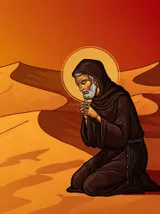What are the Basics of Holy Days of Obligation?
Chapter Text
Chapter Text (from Wikipedia)
In the Catholic Church, holy days of obligation or precepts are days on which the faithful are expected to attend Mass, and engage in rest from work and recreation (i.e., they are to refrain from engaging in work or activities that hinder the worship owed to God), according to the third commandment.
The expectation is attached to the holy day, even if transferred to another date, as sometimes happens in the Roman Rite. However, in some countries a dispensation is granted in such circumstances.[1]
Latin Church
The holy days of obligation for Latin Church Catholics are indicated in canon 1246 of the 1983 Code of Canon Law:[2]
Can. 1246. §1. Sunday, on which—by apostolic tradition—the paschal mystery is celebrated, must be observed in the universal Church as the primordial holy day of obligation. The following days must also be observed: the Nativity of our Lord Jesus Christ, the Epiphany, the Ascension, the Body and Blood of Christ, Holy Mary the Mother of God, her Immaculate Conception, her Assumption, Saint Joseph, Saint Peter and Saint Paul the Apostles, and All Saints. §2. With the prior approval of the Apostolic See, however, the conference of bishops can suppress some of the holy days of obligation or transfer them to a Sunday.
Placed in the order of the liturgical calendar, the ten days (apart from Sundays) that this canon mentions are:
- 8 December: Solemnity of the Immaculate Conception of the Blessed Virgin Mary
- 25 December: Solemnity of the Nativity of the Lord (Christmas)
- 1 January: Solemnity of Mary, the Holy Mother of God
- 6 January: Solemnity of the Epiphany of the Lord
- 19 March: Solemnity of Saint Joseph, Spouse of the Blessed Virgin Mary
- Thursday of the sixth week of Eastertide: Solemnity of the Ascension of the Lord
- Thursday after Trinity Sunday: Solemnity of the Most Holy Body and Blood of Christ (Corpus Christi)
- 29 June: Solemnity of Saints Peter and Paul, Apostles
- 15 August: Solemnity of the Assumption of the Blessed Virgin Mary
- 1 November: Solemnity of All Saints
There used to be many more holy days of obligation. With the motu proprio of 2 July 1911, Supremi disciplinae, Pope Pius X reduced the number of such non-Sunday holy days from 36 to 8: the above 10 dates (1 January was then the Feast of the Circumcision of Christ) minus the feasts of the Body and Blood of Christ, and Saint Joseph.[3] The present list was established in canon 1247 of the 1917 Code of Canon Law,[4] now canon 1246 of the current Code of Canon Law.
Even before the time of Pius X, the bishops in many countries had obtained the Holy See's approval to diminish the number of non-Sunday holy days of obligation, making the total fewer than 36. Today, too, episcopal conferences have availed themselves of the authority granted to them to reduce such days to the ten mentioned above.
Non-Sunday holy days of obligation all have the rank of solemnity. Accordingly, if in Ordinary Time one of them falls on a Sunday, the Sunday celebration gives way to it; but the Sundays of Advent, Lent, and Eastertide take precedence over all other solemnities, which are then transferred to another day[5] (but the precept is not). Occasionally, the Feast of the Sacred Heart may fall on Ss. Peter and Paul's feast day, in which case it takes precedence over the Solemnity of Ss. Peter and Paul; the precept then applies to the feast of the Sacred Heart.
Working holy days
While episcopal conferences may suppress holy days of obligation or transfer them to a Sunday, some of them have maintained as holy days of obligation some days that are not public holidays. For most people, such days are normal working days, and they therefore cannot observe the obligation “to abstain from those works and affairs which hinder the worship to be rendered to God, the joy proper to the Lord's day, or the suitable relaxation of mind and body”.[6] However, the faithful remain bound by the obligation to participate in Mass. For these days, colloquially referred to as “working holy days”, churches may have a special schedule, with Mass available outside the normal working hours or on the preceding evening. In times past, holy days would often be referred to as days of single or double precept, with those of double precept requiring the faithful to both attend Mass and to abstain from servile works. Days of single precept would permit servile work.[7]
In Ireland, the only holy days of obligation that are also public holidays are Christmas and Saint Patrick's Day. Thus, there are five working holy days. Similarly, Slovakia has four holy days of obligation that are also public holidays: Christmas, Solemnity of Mary Mother of God, Epiphany, and All Saints', leaving it with five working holy days. In the Netherlands, the bishops conference decreed that, with effect from 1 January 1991, the feasts of the Assumption and All Saints, each of which it had previously decided to celebrate on the following Sunday. These were to be of obligation as regards Mass, but not for abstaining from work.[8]
Quiz
Review the questions and verify your answers by clicking the tab.
How many Holy Days does the Vatican acknowledge?
Ten
Which Code in Canon Law describes the Holy Day obligation?
Canon 1246
What is a working Holy Day?
A Holy Day which falls on a day that is not Sunday or a public holiday. On these days, Catholics are required to go to mass, but not to abstain from work.
Why doesn't every country celebrate all ten Holy Days suggested by the Vatican?
The conference of bishops has the authority to seek permission for reducing or increasing the number of Holy Days of Obligation.




